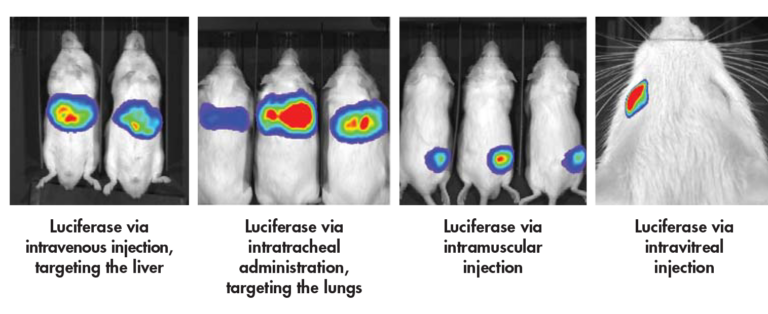Biomere has developed experience in handling and dosing viral and non-viral gene therapies in small and large animal models. Viral vectors include various serotypes of adeno-associated viruses (AAV) including AAV9 and AAV5. The team can dose lentiviruses in specific primate models (pig-tailed macaques or cynomolgus monkeys) and has experience with other modalities including oligonucleotides, RNA-based therapies (mRNA, siRNA) and gene editors including CRISPR and base editing.
Biomere has developed deep expertise in evaluating PK/PD characteristics of nonviral gene delivery systems such as LNPs (lipid nanoparticles). LNPs have been reported to cause adverse effects and the Biomere team has the experience of anticipating and counteracting adverse effects such as hematological issues or liver injury.
The Biomere team has expertise in various dosing routes of administration. For rodent models, the most common dosing route is intravenous while large animals are amenable to multiple dosing routes of administration:

Figure 1: IVIS imaging of rodent models showing accumulation in specific organs including the liver, lungs, muscle and eye.
Biomere has experience using transgenic animal models and has the capabilities to house and breed multiple transgenic lines that can be placed on study for ADME programs. The team has expertise in specific disease models including enzyme deficiency disorders and hematological diseases such as sickle cell anemia.